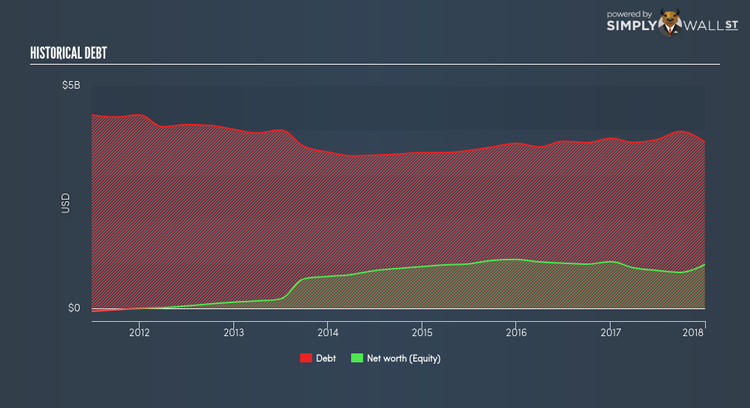How Financially Strong Is CDW Corporation (NASDAQ:CDW)?

Investors seeking to preserve capital in a volatile environment might consider large-cap stocks such as CDW Corporation (NASDAQ:CDW) a safer option. Doing business globally, large caps tend to have diversified revenue streams and attractive capital returns, making them desirable investments for risk-averse portfolios. However, its financial health remains the key to continued success. I will provide an overview of CDW’s financial liquidity and leverage to give you an idea of CDW’s position to take advantage of potential acquisitions or comfortably endure future downturns. Remember this is a very top-level look that focuses exclusively on financial health, so I recommend a deeper analysis into CDW here. See our latest analysis for CDW
How does CDW’s operating cash flow stack up against its debt?
Over the past year, CDW has maintained its debt levels at around US$3.73B comprising of short- and long-term debt. At this constant level of debt, the current cash and short-term investment levels stands at US$144.20M for investing into the business. Additionally, CDW has produced cash from operations of US$777.70M over the same time period, resulting in an operating cash to total debt ratio of 20.82%, indicating that CDW’s current level of operating cash is high enough to cover debt. This ratio can also be a sign of operational efficiency as an alternative to return on assets. In CDW’s case, it is able to generate 0.21x cash from its debt capital.
Does CDW’s liquid assets cover its short-term commitments?
With current liabilities at US$2.51B, it appears that the company has maintained a safe level of current assets to meet its obligations, with the current ratio last standing at 1.34x. For Electronic companies, this ratio is within a sensible range since there’s sufficient cash cushion without leaving too much capital idle or in low-earning investments.
Does CDW face the risk of succumbing to its debt-load?
With total debt exceeding equities, CDW is considered a highly levered company. This is common amongst large-cap companies because debt can often be a less expensive alternative to equity due to tax deductibility of interest payments. Consequently, larger-cap organisations tend to enjoy lower cost of capital as a result of easily attained financing, providing an advantage over smaller companies. We can check to see whether CDW is able to meet its debt obligations by looking at the net interest coverage ratio. Ideally, earnings before interest and tax (EBIT) should cover net interest by at least three times. For CDW, the ratio of 5.75x suggests that interest is appropriately covered. High interest coverage serves as an indication of the safety of a company, which highlights why many large organisations like CDW are considered a risk-averse investment.
Next Steps:
CDW’s debt and cash flow levels indicate room for improvement. Its cash flow coverage of less than a quarter of debt means that operating efficiency could be an issue. Though, the company exhibits proper management of current assets and upcoming liabilities. I admit this is a fairly basic analysis for CDW’s financial health. Other important fundamentals need to be considered alongside. You should continue to research CDW to get a better picture of the stock by looking at:
Future Outlook: What are well-informed industry analysts predicting for CDW’s future growth? Take a look at our free research report of analyst consensus for CDW’s outlook.
Valuation: What is CDW worth today? Is the stock undervalued, even when its growth outlook is factored into its intrinsic value? The intrinsic value infographic in our free research report helps visualize whether CDW is currently mispriced by the market.
Other High-Performing Stocks: Are there other stocks that provide better prospects with proven track records? Explore our free list of these great stocks here.
To help readers see pass the short term volatility of the financial market, we aim to bring you a long-term focused research analysis purely driven by fundamental data. Note that our analysis does not factor in the latest price sensitive company announcements.
The author is an independent contributor and at the time of publication had no position in the stocks mentioned.

